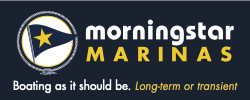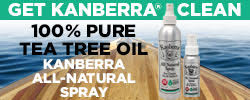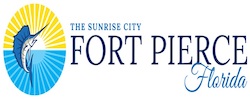Captain Charmaine Says No Such Thing as Local vs Tourist Prices in the Florida Keys
It’s baloney. LOL
Truly. There is no “locals” price and a “tourist” price that I know of anywhere in the Keys. In fact, it’s what we locals WANT in the off-season so we can continue to frequent their establishments but not get hit with “season” prices. Trust me, I wish there was a double standard! LOL
I’m sure what the waitress meant was jokingly saying “We’ll give you the locals price,” due to her error, rather than it being established protocol.
(You can quote me on this.)
P.S. Others may be confusing this with such things as discounts for taxis. Locals who use taxi service daily get a discount. They ride 20 times a month at least, because they take the same taxi service to and from work daily. They are given a “frequent rider” discount.
Keys Fisheries allows locals to purchase a discount card. It’s the same as buying 10 subs from Subway and getting one free. Frequent patronage is often rewarded by businesses all over the country. But as far as a “locals” discount on menu items as a rule anywhere in the Keys is unheard of. I do wish more establishments would offer such rewards for loyalty and frequent patronage. But most do not. In the case the gentleman referred, I am sure the waitress was joking. Between the true discounts offered and this incident, I’m sure it got confused.
But perhaps this can enlighten others as to why some services do offer discounts, as is the case anywhere.
Buy a coupon at Cracker Barrel to eat there ten times and get one dinner free! Gas cards used to do the …fill up ten times and get a free fill…but those days are gone! LOL
Charmaine
100% correct capt. 🙂
Charles
I respectfully disagree with your `It’s baloney’ comment as far as Islamorada is concerned. We spent 5 straight winters in Islamorada (2005 thru 2009), become known in many varied local establishments, and received a `locals’ price at a number (not all) of them. We certainly appreciated that savings and actually felt that we had become `locals’ instead of `tourists’. We loved that time in our lives. Islamorada is a very special place.
Ralph
MI don’t know about two sets of prices but there are sometimes discounts given to locals by some merchants though I don’t think the `tourist destination places’ offer them. The waitress quoted in the above article may have been talking about the `Locals Card’ which is sponsored by the Key West newspaper `The Citizen’. Info is at their website http://keysnews.com/ Scroll down the left side to `The Locals Guide ‘“ A savings directory for locals’ in Monroe County. The back of the card states: `The Citizen Locals Card entitles MONROE COUNTY RESIDENTS to discounts and savings when presented to participating merchants listed in the Locals Guide. Local or Military ID may be required.’
Reid Gantt
March 22. A group of ladies from the marina went to Hog Heaven today for lunch. When the check came they asked, on a whim, `can we get the locals’ discount?’ The waitress asked for ID from one of them, and then gave a discount on the bill. So, yes, there is such a thing down here in the Keys as a `locals’ discount’ if you ask for it and have ID should it be requested.
Wade Ehlen
And, Captain Charmaine responds:
Seems the subject has broadened a bit, to say the least. Talk about opening a can of worms that turned into anacondas! However, my response remains the same. Let me explain.
As I previously wrote:
“Frequent patronage is often rewarded by businesses all over the country. But as far as a `locals’ discount on menu items as a rule anywhere in the Keys is unheard of.”
I stand by that.
My response was in direct reference to a situation regarding restaurant menu items. Not discounts for hotels, motels, or RV Parks in the Keys. With that said, it only makes sense to reference what I stated about being rewarded for frequent patronage. I see no disagreement here at all. It’s just that the topic has broadened beyond the scope of the original question.
Lodging? It simply makes sense that a person who wants to lodge here for three months gets a better rate than those who stay for a week. Are not daily rates much higher than weekly or monthly rates… be it for motel, hotel, Holiday Inn? Same with the mooring fields or marinas. The prices are more reasonable the longer your stay. This is true be you tourist or local — the price base is the same — this is the way it is all over the U.S. A tourist may think he or she is getting a “locals” discount because…well, that’s what tourists like to hear. I’ve heard it said in Las Vegas. (See, not everything that happens in Vegas stays in Vegas!)
The bottom line is the answer to this question: If a person moved down here and became a local would their restaurant tab total be less? In that sense, my answer is still No. Most discount cards for frequent patronage can be purchased by anyone. I’m sure if you went to Keys’ Fisheries and asked to buy their discount card you would be allowed to buy it, even if you were from Missouri. But if you’re only staying a week, you’ll spend quite a lot of money to get 15% off of the ten meals required to get the discount. LOL (Those numbers may not be accurate, I’m simply making a point here.)
Think of it this way, the guy who works the 4-midnight shift and lives here is really ticked because he is always at work during the numerous “Happy Hours.” No discounts for him! But the tourist sitting there with that wide grin on her face is certainly making up for his disappointment. Fair is fair! LOL
If you live locally, you pay taxes locally. County by county this is usually the case. If I go to the library in my county of residence, the cost for my card will be cheaper than that of a non-resident. But that is not the issue here. The issue is whether or not there is a practice of “locals” pricing vs. “tourists” pricing in restaurants. There is not. After all, we are simply the Keys, not another country!
Hugs!
Charmaine Smith Ladd, s/v September Sea
SSECN Correspondent
“Bringing you the low down from down low!”












Be the first to comment!